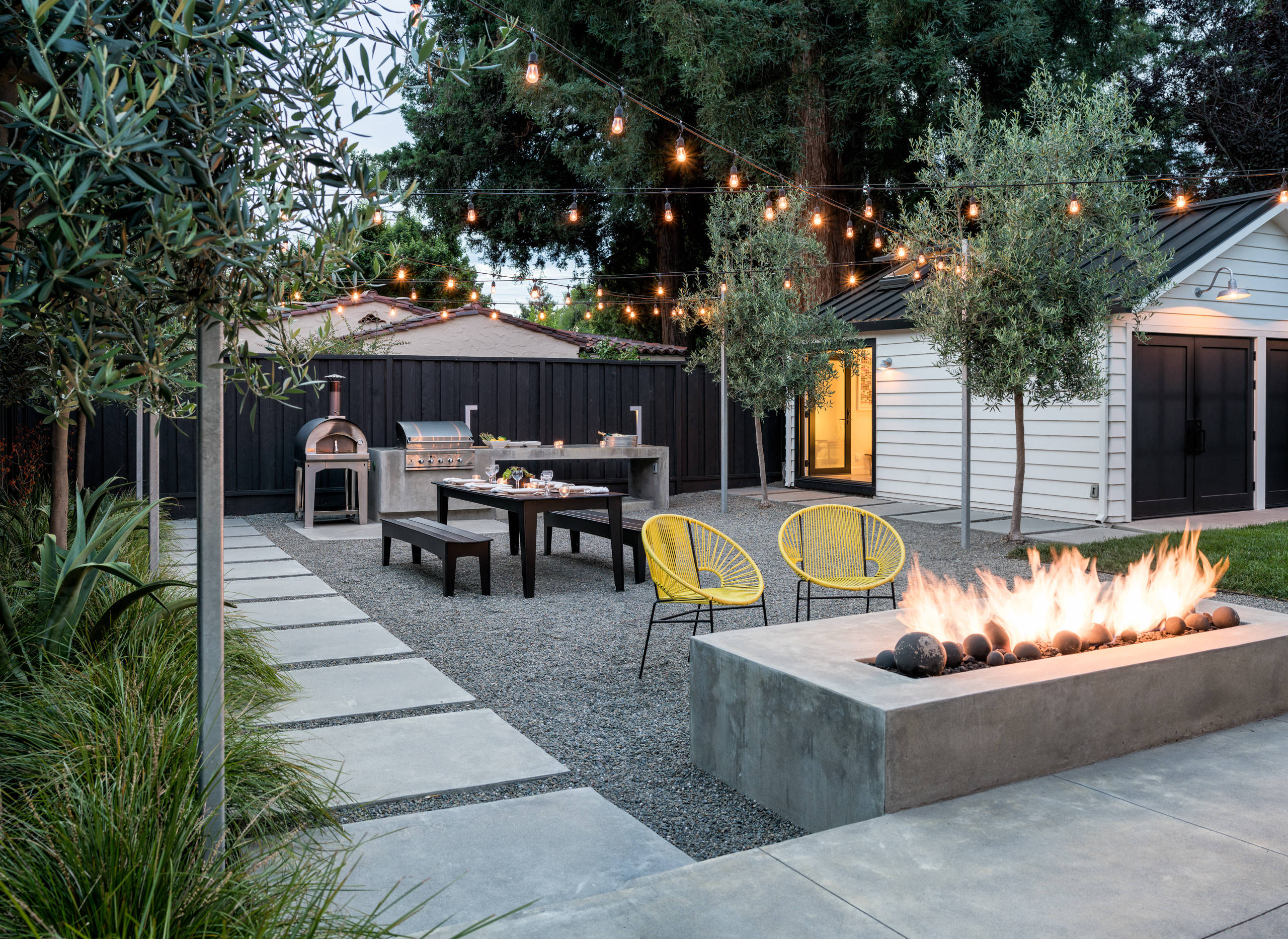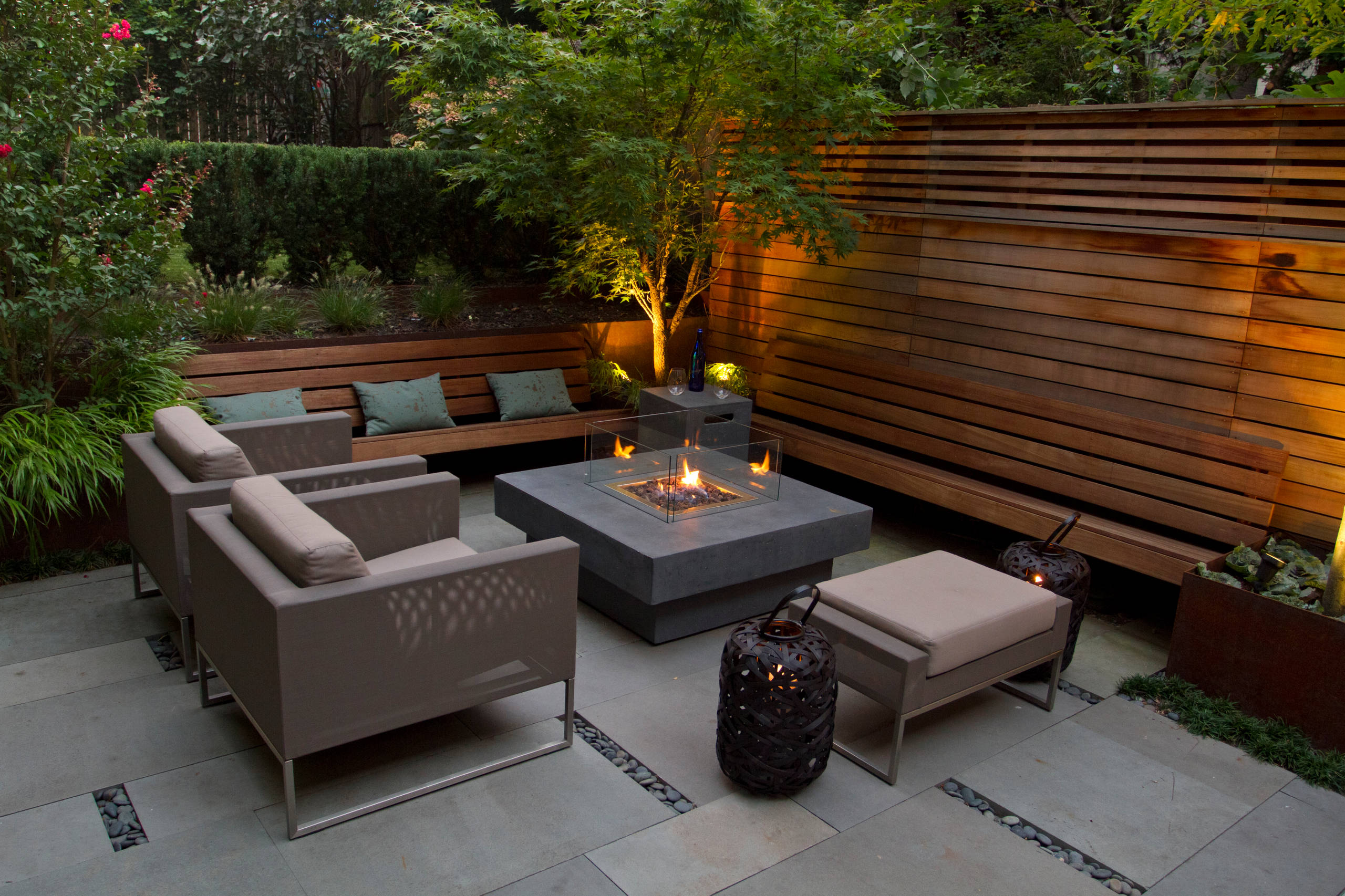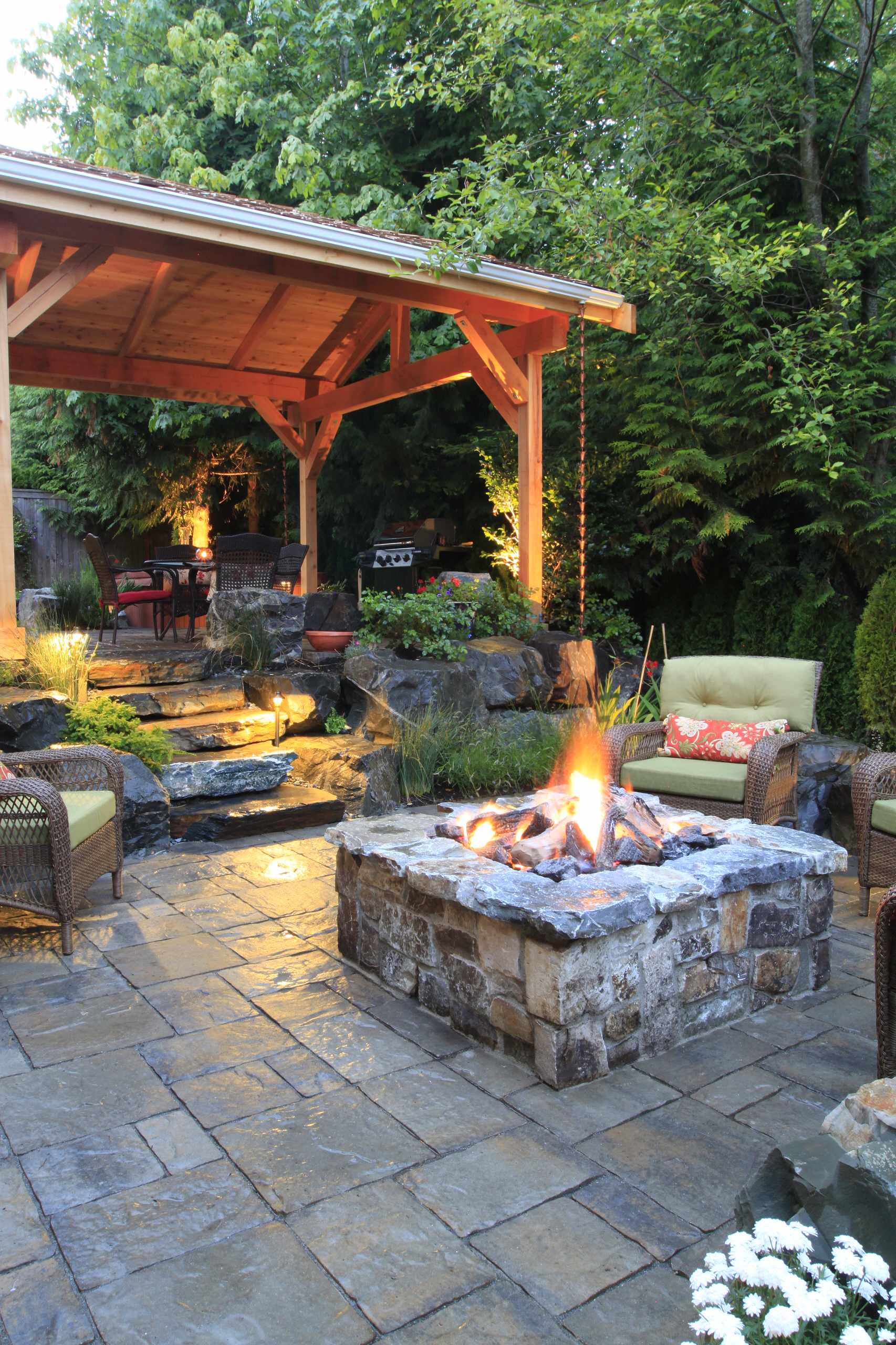Your backyard could add up to $15,000 to your home’s value, according to recent real estate studies. Yet most properties lack cohesive design elements that turn basic yards into luxurious extensions of indoor living areas. This gap between potential and reality fuels a growing trend: homeowners now spend 40% more on exterior upgrades than they did five years ago.
Modern styling concepts blend weather-resistant materials with artistic flair. Imagine fire pits doubling as sculpture pieces or planters that moonlight as privacy screens. These outdoor decor ideas prove that practical beauty isn’t just possible—it’s essential for spaces used year-round, turning every corner of your outdoor area into a functional yet stunning retreat.
Strategic planning transforms cramped patios into entertainment hubs. Color schemes borrowed from your interior create visual continuity, while modular furniture adapts to different occasions. The secret lies in balancing personal taste with elements that withstand sun, rain, and snow.
This shift in residential design thinking goes beyond aesthetics. Well-curated environments become natural gathering spots, strengthening community ties and creating lasting memories. They also serve as smart financial investments, with professionally designed landscapes delivering 150% ROI at resale.
Contents
- 1 Discover the Ultimate Outdoor Decor Ideas
- 2 Incorporating Trending Styles for 2025
- 3 Budget-Friendly Outdoor Decor Strategies
- 4 Choosing the Perfect Outdoor Materials
- 5 Creating a Cohesive Indoor-Outdoor Flow
- 6 Designing Your Outdoor Oasis with Ambient Lighting
- 7 Selecting Comfortable and Versatile Seating Areas
- 8 Maximizing Your Patio with Multi-Zone Arrangements
- 9 Utilizing Decor Accents to Enhance Outdoor Space
- 10 FAQ
- 10.1 How can I blend indoor design trends into my patio?
- 10.2 What’s a cost-effective way to refresh my backyard?
- 10.3 Which materials hold up best in changing weather?
- 10.4 How do I create distinct zones in a small yard?
- 10.5 Can mismatched furniture look intentional outdoors?
- 10.6 What lighting adds ambiance without wiring?
- 10.7 How do I protect decor during harsh seasons?
- 10.8 What accessories elevate a plain patio?
Key Takeaways
- Strategic exterior upgrades can significantly boost property value
- Durable materials now combine functionality with artistic appeal
- Color coordination creates seamless indoor-outdoor transitions
- Multi-functional pieces maximize usability in compact areas
- Professional designs often pay for themselves during home sales
- Weather-resistant elements ensure year-round enjoyment
Discover the Ultimate Outdoor Decor Ideas

Modern homes are breaking down walls between inside and outside like never before. Leading designers reveal how to extend your interior aesthetic beyond window frames, creating spaces that feel both familiar and fresh.
Defining Your Outdoor Style
Start by assessing your home’s architectural personality. A midcentury ranch might call for clean-lined planters, while a cottage could embrace whimsical lanterns. Consider seasonal usage – will this area host summer barbecues or winter bonfires?
“Outdoor rugs anchor conversation zones just like their indoor cousins,” notes Adnan Anwar of Adnan Anwar Design. “They’re game-changers for making paved surfaces feel intentional.”
Inspiration from Indoor Trends
Elevate concrete slabs with sculptural pedestals showcasing succulents or ceramic art. Layer weatherproof throw pillows in patterns matching your living room palette. These tactics create visual harmony while respecting exterior durability needs.
Don’t overlook vertical space. Hanging solar lanterns mimic chandeliers’ glow, and tall planters add drama without floor clutter. The secret? Treat exterior areas as rooms without ceilings – complete with coordinated textiles and statement pieces.
Incorporating Trending Styles for 2025

Next year’s design innovations prioritize personal expression through intentional styling choices. These approaches turn functional areas into extensions of your unique aesthetic vision.
Embracing Indoor-Outdoor Fusion
Blurring boundaries between environments creates seamless transitions. Try using similar throw pillow fabrics in sunrooms and patios. Weather-resistant side tables mirroring indoor end tables strengthen visual continuity.
Layer rugs under seating clusters to define zones, just like interior layouts. This technique makes concrete slabs feel welcoming. Multi-season versatility comes from pieces serving dual purposes – think storage benches doubling as coffee tables.
Mismatched Furniture for a Collected Look
“I’m expecting fewer matched sets. Mixing styles lets spaces tell your design story,” says Adnan Anwar. “It’s about character, not catalog perfection.”
Combine a modern lounge chair with vintage-inspired side tables. Tie diverse pieces together through repeating metal finishes or wood tones. This method adds depth while maintaining harmony.
Start with one anchor piece, like a sectional sofa. Add contrasting accent chairs over time. Neutral cushions create cohesion amid varied shapes. The result? A curated space reflecting your evolving taste.
This approach also eases budgeting. Hunt flea markets for unique stools or repaint older items. Strategic updates keep costs low while achieving designer-worthy charm.
Budget-Friendly Outdoor Decor Strategies

Creating a welcoming backyard space doesn’t require endless cash. With clever hacks and resourcefulness, you can craft areas that feel polished yet personal. Start by reimagining what’s possible with pre-loved items and simple crafts.
DIY Projects and Secondhand Finds
Thrift stores and online marketplaces hide gems waiting for new life. A fresh coat of weatherproof paint transforms rusty chairs into vibrant seating. Designer Adnan Anwar suggests: “Treat flea market scores like blank canvases. Sand, seal, and style them your way.”
“Bare walls make a patio feel incomplete. Hang a plastic-framed mirror to bounce light around. Suddenly, your small nook looks spacious.”
Old ladders become plant stands. Chipped bowls morph into succulent containers. These projects add character while keeping costs low.
Affordable Accent Pieces
Accessories pack serious style punches. Cluster thrifted vases filled with dollar-store greenery. Stack stoneware dishes as candle bases. Anwar notes: “Strategic accents distract from basic furniture. Focus on textures – woven trays, metallic lanterns, chunky throws.”
Repurpose indoor items cautiously. Spray acrylic sealant on paper art for weather resistance. Use outdoor-safe adhesives to mount them under eaves. These tweaks let you personalize spaces without risking damage.
Choosing the Perfect Outdoor Materials
Smart material selection forms the backbone of any enduring exterior design. Climate resilience meets visual appeal when you match your regional weather patterns with surfaces that age gracefully. Designer Adnan Anwar emphasizes: “Every choice must solve two problems – beauty today and durability tomorrow.”
Metals and Woods That Weather Well
Iron offers timeless elegance but requires protective coatings to prevent rust. Powder-coated aluminum resists corrosion while mimicking pricier metals. Teak develops a silvery patina over time, perfect for rustic charm seekers.
“Wicker isn’t just for porches anymore. Modern synthetic versions handle rainstorms without losing their crisp weave texture.”
Hardscape Heroes
Concrete planters bring industrial edge, while glazed ceramic adds pops of color. Natural stone slabs create organic pathways that blend with landscapes. These materials handle foot traffic and seasonal shifts without cracking.
| Material | Best Use | Durability | Maintenance |
|---|---|---|---|
| Iron | Furniture frames | 15+ years | Annual sealing |
| Teak | Benches/Tables | 20+ years | Biannual oiling |
| Coated Aluminum | Dining sets | 10+ years | Wipe downs |
| Concrete | Planters | Lifetime | None |
Anwar insists living elements complete the equation. “Trailing ivy softens stone walls. Dwarf citrus trees in ceramic pots add fragrance.” Drought-resistant succulents thrive in shallow concrete bowls, proving low-care plants maximize impact.
Creating a Cohesive Indoor-Outdoor Flow
Blending your home’s interior and exterior areas creates a unified design story. This approach makes both spaces feel larger and more intentional. Interior designer Pamela Harvey demonstrates how simple tweaks can erase hard boundaries between environments.
Bridging Spaces with Color and Texture
Harvey’s patio drapery concept uses Sunbrella fabric panels to soften transitions. “These curtains provide shade while adding depth,” she explains. Matching indoor and exterior textiles creates visual harmony without sacrificing weather resistance.
“Treat exterior walls as design opportunities. Flowing drapes or vertical gardens extend your home’s architecture naturally.”
Choose colors that adapt to changing light. Warm neutrals work in sunlit rooms and shaded patios. Repeating cushion patterns or wood finishes ties areas together. Even small touches – like matching throw blankets – strengthen connections.
Textures play a key role in comfort continuity. Woven rugs underfoot mirror indoor coziness. Weatherproof velvet pillows add luxury that transitions seamlessly. Think beyond furniture: stone accents inside echo gravel pathways outside.
Maintain cohesion while addressing practical needs. Use mildew-resistant fabrics where moisture gathers. Opt for fade-resistant hues in sunny spots. These choices ensure your design story stays intact through seasons.
Designing Your Outdoor Oasis with Ambient Lighting
Evening hours become prime time when you harness light’s transformative power. Strategic illumination turns functional areas into enchanting retreats, letting you savor warm nights long after sunset.
Hanging Twinkle and Solar Pathway Lights
Drape string lights across pergola beams or tree branches to create celestial ceilings. These twinkling accents add sparkle while banishing dark corners. Solar-powered stakes along walkways solve safety concerns without electrical work – they store daylight energy automatically.
“Layered lighting builds mood and functionality. Start with overhead glow, then add task lighting where needed.”
Path markers guide guests through your yard while showcasing flower beds. Choose designs that complement your style: modern brushed steel or rustic lantern shapes. They’ll shine brightest during summer gatherings.
Innovative Lighting Ideas for After-Dusk Ambience
Embed LED strips under bench seats for subtle uplighting. Try motion-activated spotlights to highlight water features. Mix warm and cool tones – golden hues for dining zones, white light for cooking areas.
Weatherproof pendant lights over seating clusters create intimate vibes. For temporary setups, battery-operated candles offer flickering charm without fire risks. These solutions maximize your space’s usable time while elevating its visual appeal.
Selecting Comfortable and Versatile Seating Areas
Smart seating choices transform how you experience your exterior spaces. Flexible arrangements adapt to everything from quiet mornings to lively gatherings, proving comfort and function aren’t mutually exclusive.
Portable Seating Solutions
Lightweight wooden benches shine in multi-role scenarios. Tuck them under dining tables during meals, then pull them around fire pits for evening chats. Designer Adnan Anwar observes: “Mobility lets spaces evolve with your needs. A bench becomes a coffee table with a tray addition.”
Weather-resistant armchairs with removable cushions offer similar flexibility. Choose foldable designs that store easily or wheeled options for effortless repositioning. These pieces handle sudden rain showers without sacrificing style.
Establishing Zones for Relaxation
Define conversation nooks with area rugs and low tables. Position lounge chairs to face garden features or water elements. This intentional placement encourages lingering while showcasing your landscape.
“Layer seating heights for visual interest. A deep sofa paired with ottomans creates tiered comfort zones.”
Use planters or screens to subtly separate spaces. A tall fern between seating clusters suggests privacy without blocking views. Modular sectionals work well for large patios, letting you expand seating as guest lists grow.
| Material | Weight | Weather Resistance | Best For |
|---|---|---|---|
| Teak | Heavy | High | Permanent setups |
| Aluminum | Light | Moderate | Frequent rearranging |
| Resin Wicker | Medium | High | All-season use |
| Powder-Coated Steel | Varies | Extreme | Coastal climates |
Test layouts by hosting mock gatherings. Move pieces during different times to assess sun exposure and traffic flow. The right configuration makes every square foot work harder.
Maximizing Your Patio with Multi-Zone Arrangements
Transforming a single patio into multiple functional areas triples its usability. Design expert Kate Abt demonstrates this through her backyard layout featuring distinct cooking and relaxation zones. Her approach blends material contrasts with smart spatial planning.
Defining Dining and Lounge Areas
Position dining spots near grills for seamless meal prep. Abt uses brick pavers near cooking stations to match her home’s exterior. This creates visual harmony while containing food spills. Lounge zones sit farther back with fire pits as focal points.
“Large stone tiles between zones act as visual pauses. They prevent a ‘checkerboard’ effect while modernizing traditional brick.”
Mix materials strategically. Pair warm brick with cool-toned concrete or slate. This contrast defines spaces without physical barriers. Keep pathways 36-42 inches wide for comfortable movement between zones.
| Material | Best Zone | Style Pairing | Maintenance |
|---|---|---|---|
| Brick | Dining/Cooking | Traditional | Annual sealing |
| Large Stone | Transitional | Contemporary | Power wash |
| Stamped Concrete | Lounge | Modern | Reseal biannually |
Compact patios benefit most from clear zone definitions. Use low planters as natural dividers. Stackable stools tuck under tables when unused. These tricks maintain openness while accommodating varied activities.
Coordinate seat cushions across zones for cohesion. Neutral grays or tans work with any material palette. Add pops of color through removable accessories like ceramic pitchers or patterned napkins.
Utilizing Decor Accents to Enhance Outdoor Space
Small details often create the biggest impact in exterior areas. Thoughtful additions elevate functionality while expressing personal style, turning basic setups into curated environments.
Strategic Style Boosters
Sculptural drink tables solve two needs at once – holding beverages while adding artistic flair. Designer Adnan Anwar confirms: “These pieces make outdoor areas more functional without breaking budgets. Choose geometric shapes or organic forms that complement your existing furniture.”
Mirrors work magic in compact spots. Position them to reflect flower beds or water features, doubling visual interest. Frosted or plastic-framed versions withstand weather while creating depth. They’re perfect for dark corners needing light amplification.
Accessories should earn their keep. Look for trays storing remotes yet looking chic on tabletops. Waterproof throw blankets serve as both warmth sources and color accents. This approach ensures every piece contributes to comfort and aesthetics.
“Mix materials for tactile appeal. A concrete side table paired with woven placemats adds contrast that feels intentional.”
FAQ
What’s a cost-effective way to refresh my backyard?
Hunt for secondhand furniture at thrift stores or online marketplaces. A fresh coat of weather-resistant paint or new cushions can revive old pieces. DIY projects like hand-painted planters or upcycled pallet seating also add charm without breaking the bank.
Which materials hold up best in changing weather?
Coated aluminum resists rust, while teak develops a natural patina over time. For accents, concrete and natural stone withstand rain and sun. Always choose UV-resistant fabrics for cushions and opt for powder-coated metals in humid climates.
How do I create distinct zones in a small yard?
Use portable screens, raised planters, or outdoor rugs to define areas. A bistro set works for dining, while a compact loveseat or foldable chairs create a lounge spot. Vertical gardens or hanging lights can separate spaces without crowding.
Can mismatched furniture look intentional outdoors?
Absolutely! Pair a vintage wrought-iron table with modern resin chairs for contrast. Stick to a cohesive color scheme—like earthy greens and terracotta—to tie eclectic pieces together. Add throw pillows or a shared rug to unify the look.
What lighting adds ambiance without wiring?
Solar-powered path lights or string bulbs are energy-efficient options. Lanterns with LED candles or battery-operated fairy lights wrapped around trees create a cozy glow. For drama, try uplighting a focal point like a fountain or sculpture.
How do I protect decor during harsh seasons?
Store lightweight items like cushions and ceramics in waterproof bins. Cover heavy furniture with fitted, breathable covers. Bring sensitive materials like wicker indoors or into a shed to prevent moisture damage.
What accessories elevate a plain patio?
Mirrors expand the sense of space, while sculptural side tables add function and flair. Layer textures with woven trays, outdoor-rated art, or a bold umbrella. Even a single statement piece, like a fire bowl, can become a focal point.

